Blue jays are renowned for their bravado and beautiful plumage, but did you know they are excellent environmentalists too? While the blue jay is not an activist, they are great for the environment. They have a strong proclivity for planting acorns and seeds, helping encourage biodiversity, amongst other things. So, we know they are excellent for encouraging foliage, but are they good at hand feeding? Is hand feeding Blue Jays recommended?
To put it simply, blue jays should not be your first choice for hand feeding. They are brave birds, but they also tend to be aggressive. You can find Blue Jays in many different habitats throughout the US. If you have a bird feeder in your backyard, chances are you will have a blue jay visiting your yard.
Their favorite habitats are oak woodlands, but there are many reports of blue jays in residential areas. They have a bright blue plumage that all but makes up for their bird feeder’s raucous behavior.
What’s So Bad About Hand Feeding Blue Jays?
If you really want to know how to feed a blue jay by hand, there is one thing you should know first. It is illegal to raise a Blue Jay as a pet in the US unless you are a licensed rehabilitator. So as long as you are hand feeding Blue Jays and keeping them in the wild it’s ok.
What Are Blue Jays?
The Blue Jay is a brightly colored bird that is common through the central and eastern areas of the US as well as Southern Canada. The Blue Jay does prefer a wooded area as a natural habitat, but they are found increasingly in residential areas. Baby Blue Jays will typically stay in the nest with the parents until they are two months old. But, they can actually find food for themselves when they are just a few weeks old.
Author Note: There are rare occasions when Blue Jays abandon their young. In this case, if you do find an abandoned baby Blue Jay, you may have to assist the baby bird. However, always remember to call your local wildlife authority if you do find an abandoned wild bird.
The first step in hand-feeding a wild jaybird is to get a Blue Jay to come to you first.
How Do You Get a Blue Jay to Come to You?
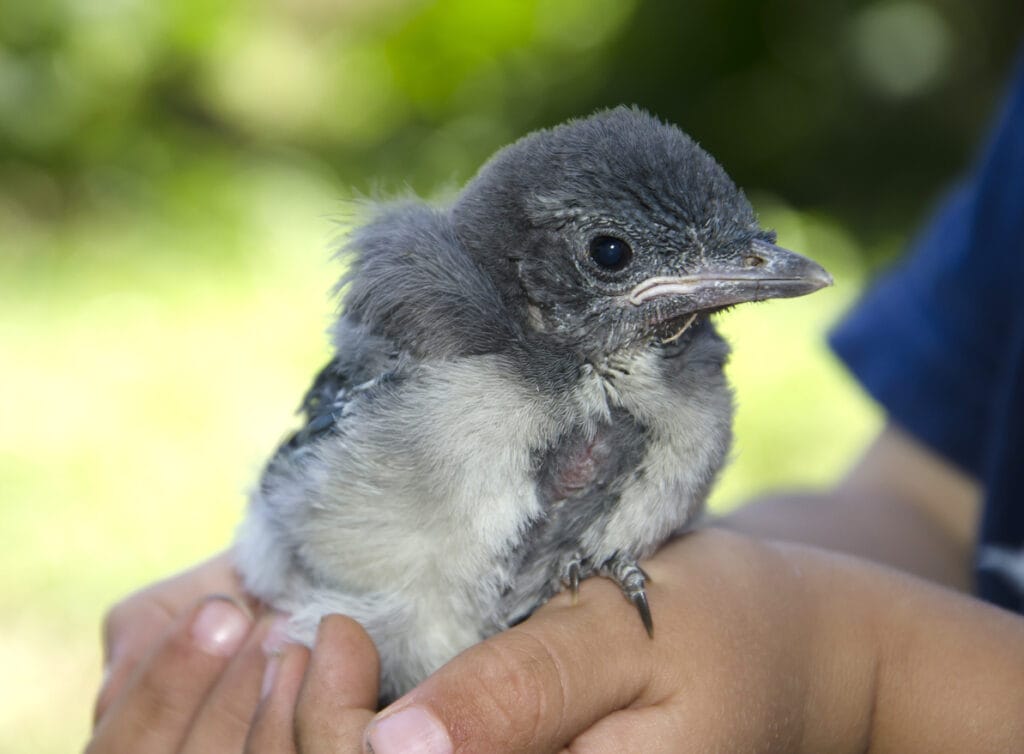
Begin by getting the Blue Jay to get comfortable simply being near you. You can start off with a feeder in your garden. When the feeder has gotten low or empty, place some of a blue jay’s favorite food in your palm. Remain very still, and wait patiently. Eventually, a bird may land on your hand. If one does, then you still and keep as quiet as possible.
Do Blue Jays Recognize Humans?
Blue Jays are brave birds, so they generally don’t scare easily around humans. The Blue Jay is becoming a staple in most backyards, particularly in residential areas close to woodlands and rural areas.
How to Make Friends with a Blue Jay
1. Introduce Yourself Slowly
Firstly, you need to just stick around in the background while they eat. Keep the feeder well stocked and stand in the background. Gradually stand closer to the feeder. The trick is to integrate naturally into the environment. To do this, you need to gradually introduce yourself and avoid making any sudden movements or noises.
2. Be Consistent
If you want to succeed in hand-feeding a Blue Jay, you should stay consistent. When you show up at the same time each and every day, the birds will get to know you better. If the bird flies away, avoid the temptation to follow it. Let the birds feel safe enough to move away from you. If you do follow or chase the bird, they could interpret that as predatory.
3. From Your Hand
Okay, so the birds are now comfortable with you being close by. Next up, you have to get them comfortable with eating from your palm. But before you place the food in their palm, simply hold your hand close to them.
Author Note: The birds might scare off initially, but they will eventually become comfortable with your hand. If you are a little put off by the thought of a bird on your hand, which you shouldn’t be if you are looking to feed them from your hand, use gloves.
Before you offer the birds your hand, make sure they are free from any fragranced products. Scented products like these can chase birds away. Place some of the Blue Jay’s favorite treats in the palm of your hand.
Here are Some Tips:

- Stay still! They will eventually come to your hand to eat the treats. Don’t lose hope. This could take a few weeks or a couple of days. If you were patient and developed a solid relationship while they were at the feeder, it could be quicker.
- They will start snatching treats before they get comfortable enough to sit on your hand. Don’t get a fright and, again, don’t become discouraged.
- Prepare yourself for the sensation. It could feel weird. The experience might feel odd when you initially feel it, so don’t jump when the bird first comes.
Tips for Attracting Blue Jays
First up, make sure you are offering them something to suit all their needs. You need to make sure that you provide shelter, food, water, and comfortable nesting sites. If you bring all of these to your backyard, Blue Jays are sure to feel welcome in your backyard.
We mentioned earlier that there are a few treats you can offer Blue Jays from the palm of your hand. These are the ones we think will work the best:
Top Blue Jay Treats
Nuts
Nuts (unsalted are the best) are a Blue Jay’s favorite. The nuts should be unsalted, but they could be either whole or shelled already.
You can offer them mealworms, cracked corn, suet, and even sunflower seeds. These are all among some of Blue Jay’s favorite treats. But nuts aren’t the only treat you can offer a Blue Jay. They also enjoy sweeter treats such as berries and fruits. Try a mix of elderberries, cherries, blackberries, and even wild grapes.
How to Make a Nesting Site for a Blue Jay
Jaybirds will not use a cavity nest. This means they will not use birdhouses or any similar cavity nest. They will typically stay in trees that provide decent shelter. So you can’t offer a birdhouse to entice them, what can you offer?
Simply provide some nesting materials. This can be small twigs, grass clippings, or sticks. A Blue Jay will often make a large open platform their nesting site. These platforms should be at least 8 inches square. They typically build large nests.
BlueJays: Love or Hate
Blue Jays have a bad reputation for being bullies of the bird world. They are beautiful, bold creatures that have often been spotted robbing a robin’s nest. They do sometimes scoop a young robin hatchling out the nest. For this reason, they haven’t garnered the love of many birders.
They are a brave species, filled with both brains and bravado.
But why do they raid nests? Blue Jays require plenty of meat in their diet. They will scoop a young hatchling not out of spite but to feed an incubating mate. Blue Jays rarely steal a young bird from another nest for their own food. They will do so to feed their young, or, as we mentioned, an incubating mate.
Why Do People Love BlueJays?
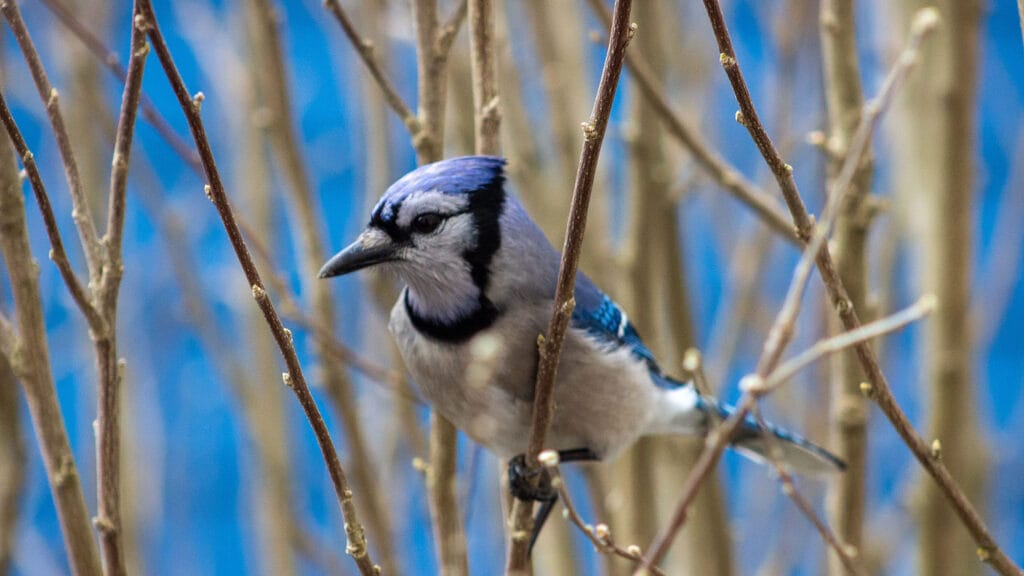
Blue Jays are not songbirds, despite their bright and attractive plumage. They are in the same family as crows and ravens, which would explain their hunger for meat. It may also explain their bold behavior. But despite their reputation, the Blue Jay is not as much of a bully as most people make them out to be.
And when they, and their seemingly savage behavior, is understood, then most begin to love them. The Blue Jay is an intelligent bird, and researchers have seen these birds display problem-solving intelligence.
Author Note: Their behavior is fascinating to watch in the wild. They will often mimic a cry of a bird of prey, causing confusion, and then swoop in to take advantage of the chaos.
They are not your typical migratory bird, which makes consistency easy as well. You can earn their trust by being consistent in your actions. Remember never to act too suddenly, and offer them food from a bird feeder. They will eventually become accustomed to your presence while they feed from the feeder.
Once this has happened, you can begin holding out your hand while they feed. Once they have stopped getting a fright whenever your hand is raised, offer treats from it. You can remove the food from the feeder and place some of their favorite treats in your hand.
Conclusion
Remember that Blue Jays are brave and will take offense if they feel threatened. Be sure to be consistent and show up around the same time each day. This will help earn Blue Jay’s trust, and they will begin to recognize you as a non-threatening presence.
We hope you enjoyed this guide on hand feeding Blue Jays.
Fly high friends!




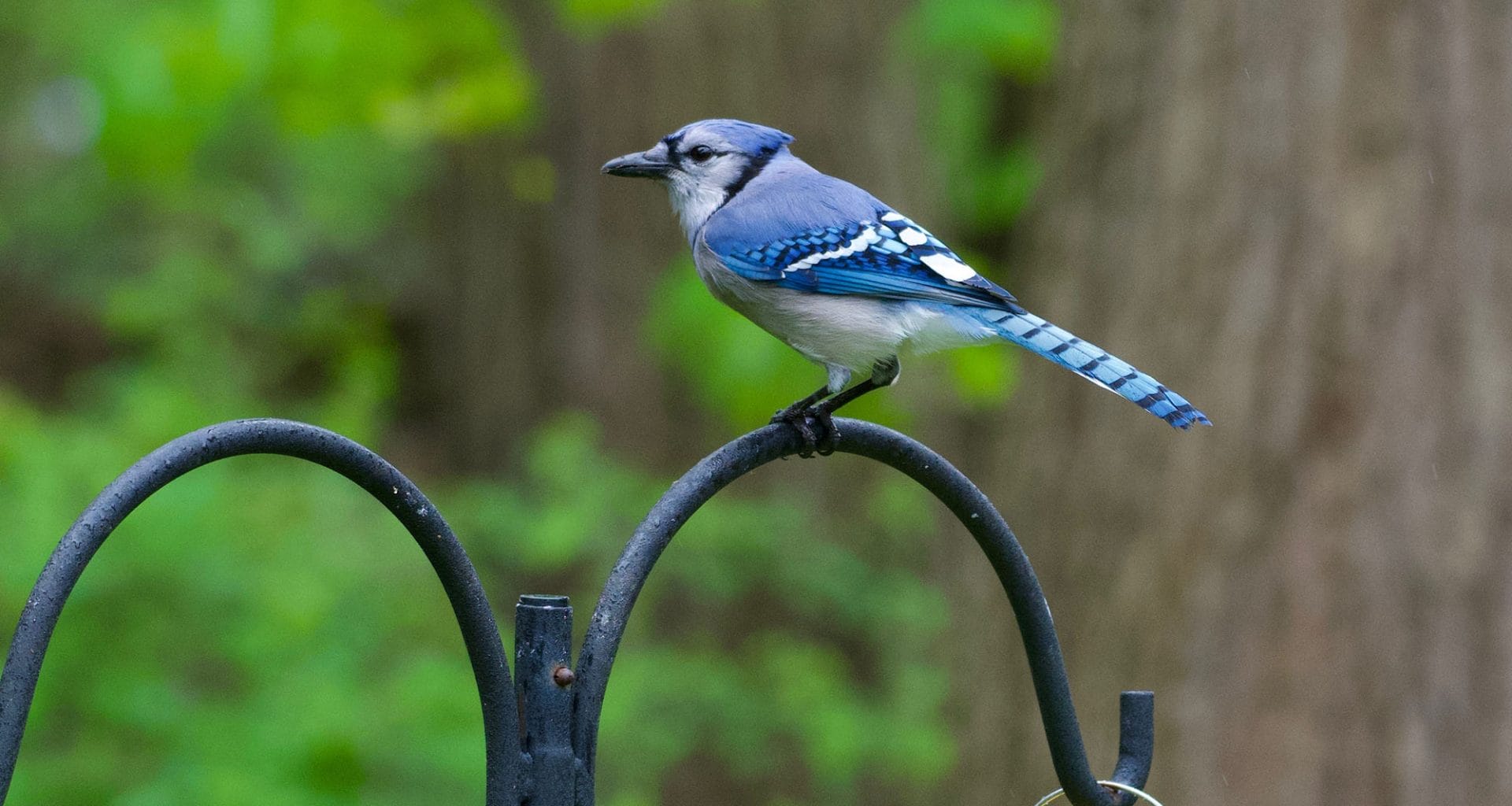

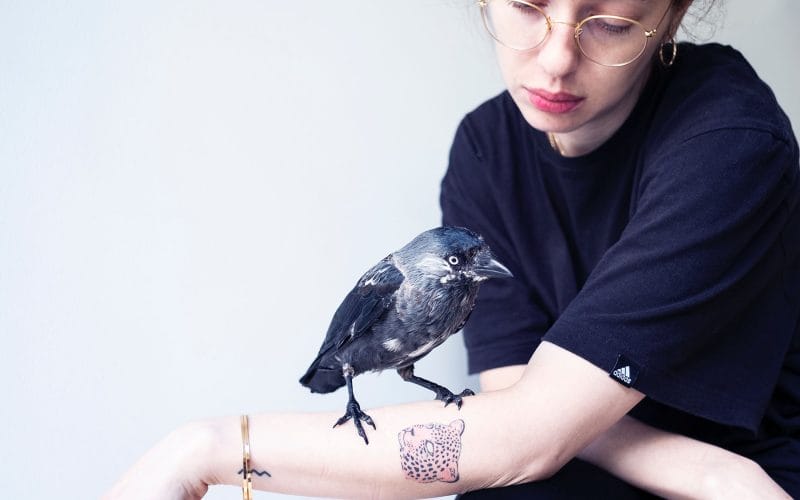
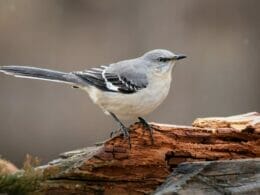
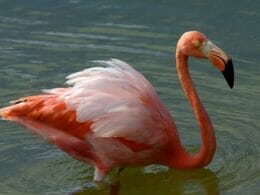
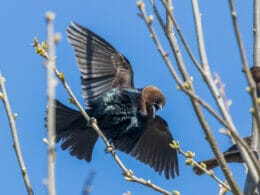

You are spot on about hand feeding jays. I’ve been hand feeding wild crows for months, and it takes patience that most people don’t have. I’m gonna try this experiment because I get a ton of jays in my yard, and my daughter would love the experience. Thanks for the tips. 😁
We have a local blue jay that comes to visit and climbs all over us while eating right from our hands. If we’re not outside and she wants to visit, she’ll perch on the lawn chair and stare through the patio door until we come out.
If there’s an email address I can send them, I’d love to share some pictures and videos of our affectionate little blue friend!!
I have some fairly friendly Jays at a cottage (they call out to me to bring peanuts and will let me within 6 feet so far).and want to try hand-feeding of Jays and Chickadees at home too. At home, I have a squirrel that comes when I call. Is there a call I can use for birds? Could they hear a dog-whistle and learn that it means food?